Turn your veterinary hospital into a spaw
Low-cost (and no-cost!) Fear Free tips by role and by room.
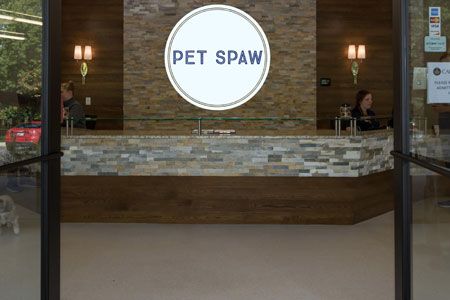
Charlotte Animal Referral and Emergency | Charlotte, North Carolina | Photo courtesy of Brian Osborne, The Professional Photography GroupIf you want to cultivate a ‘spaw'-like experience for your patients and clients, you don't need to scrap your current hospital. Instead of starting over, start making small Fear Free changes that make a big difference.
As you'll see below, each area of your hospital presents opportunities to proactively prevent fear and promote calm, and each team member has a role to play.
Pre-visit prep
>Lead Fear Free advocates: Client care representatives (CCR)
>Supporting advocates: Veterinarians, technicians, assistants
Before calling to confirm a scheduled appointment examine the patient's emotional record and then go over any special accommodations for the pet. For example, remind the client if the veterinarian prescribed pre-visit pharmaceuticals or suggested the client call the front desk from the parking lot to notify the hospital of the pet's arrival.
Send a reminder email with other general pre-visit suggestions that can help clients reduce fear, anxiety and stress associated with traveling to your hospital. You can also post these tips on your website. Some general recommendations include having owners:
Acclimate and train the pet for transport (carrier, crate, seatbelt). A qualified professional trainer may need to assist the client with this training.
Provide non-slip surfaces during transport.
Use aroma and acoustic therapy to create a calm environment.
Bring a hungry pet and the pet's favorite treats (if medically warranted).
Bring familiar objects from home, such as a bed or toy, to bring familiarity to a novel situation.
General hospital recommendations
Incorporate these strategies throughout the entire hospital:
Provide non-slip surfaces.
Use aroma and acoustic therapy.
Provide all team members with treat bags for easy access to patient reinforcers.
Use a considerate approach for patient interactions. To avoid overwhelming patients, turn your body sideways when you face them, avoid direct eye contact and allow pets to decide if they want to interact.
Talk softly and move slowly.
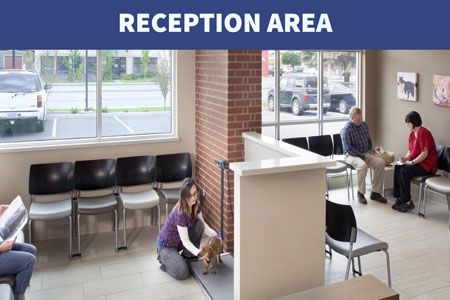
Pet Emergency Clinic and Referral Center | Spokane, Washington | Photo courtesy of Tim Murphy, Murphy Foto ImageryReception area
>Lead Fear Free advocates: Client care representatives
>Supporting advocates: All veterinary healthcare team members in the area
The CCR can play the role of a concierge-ready to assist clients coming into the hospital. The CCR should also:
Use a considerate approach and let the pet decide if it wants to interact.
Be prepared with the patient's preferred treats (depending on the reason for the visit and the patient's emotional record).
Evaluate, document and communicate the patient's emotional state before handing the pet off to the next team member.
Managers can make the reception area more receptive by:
Using natural or incandescent lighting
Avoiding seating near entrances and exits
Using barriers to block sight lines.
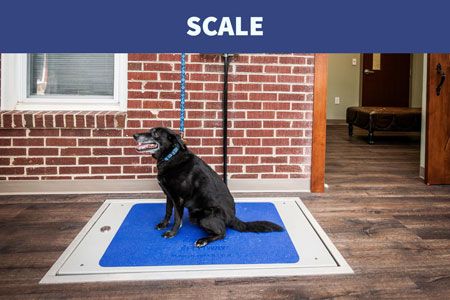
Hardin Valley Animal Hospital | Knoxville, Tennessee | Photo courtesy of David BridgesScale
The scale bears special mention, as the weighing process is a stress point for many pets. Take these steps for a smoother weigh-in:
The scale should be stable and feature a non-slip surface.
Place the scale in an open area. The pet shouldn't need to walk into a corner to get on the scale.
Don't pull or force the dog onto the scale. Use a treat trail or motion to encourage the pet to choose to sit on it.
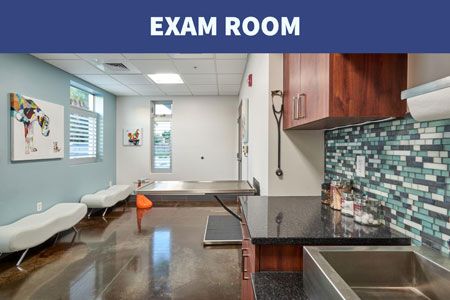
McGregor Boulevard Veterinary Clinic | Fort Myers, Florida | Photo courtesy of Stuart Gobey, Island Studio PhotographyExamination room
>Lead Fear Free advocates: Technicians, assistants
Once in the exam room, the technician should:
Allow the pet to explore the room while obtaining the medical and behavior history from the client.
Evaluate and record the pet's emotional state and communicate observations to the veterinarian.
Allow the pet to stay in the exam room for necessary procedures, if possible. This allows the pet to stay with its owner in an area that feels safe. If owners are uncomfortable being in the room during procedures, you may ask them to step out into the reception area for a moment.
Use gentle control and a considerate approach when performing procedures.
Management can make the exam room more enticing by:
Stocking it with a variety of treats and toys
Providing a water bowl for each patient
Giving cats access to a litter box
Offering cats accessible hiding spots, such as their carrier with the top removed, a towel or a cat tree with elevated perches
Designating feline- and canine-only exam rooms.

Pet Emergency Clinic and Referral Center | Spokane, Washington | Photo courtesy of Tim Murphy, Murphy Foto ImageryTreatment room
>Lead Fear Free advocates: Veterinarians, technicians, other team members
If it's necessary to take the patient to the treatment area, be sure to:
Survey your route without the pet first. Tell other team members you're bringing the patient to the treatment area and make accommodations to avoid or minimize potentially frightening stimuli.
Have all supplies prepared beforehand to minimize the patient's time in the treatment area.
Use barriers as you transport the pet and while in the treatment area to decrease exposure to potentially frightening stimuli.
Continue to assess the patient's emotional well-being and make notes in the emotional record as necessary.
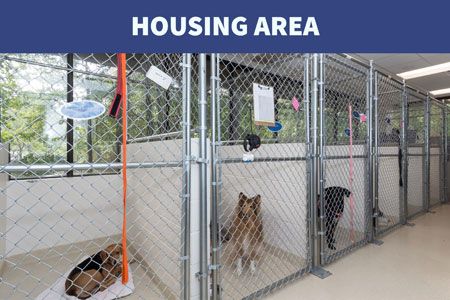
Charlotte Animal Referral and Emergency | Charlotte, North Carolina | Photo courtesy of Brian Osborne, The Professional Photography GroupHousing area
>Lead Fear Free advocates: Pet care specialists, kennel attendants
>Supporting advocates: Veterinarians, technicians, assistants
The kennel team is responsible for:
Recognizing fear, anxiety and stress in patients and recording and communicating this information to others
Using barriers, such as cage covers, hiding boxes and screens, to decrease stress-inducing stimuli
Placing patients appropriately (e.g., cats generally prefer to be high, and dogs that get overly aroused when people or dogs walk past should be housed in low-traffic areas)
Using a considerate approach when removing the pet from a cage or kennel
Closing kennel doors softly
Talking quietly.
Spaw steps
You can create a veterinary hospital “spaw” without building a new hospital. Small tweaks to your approach and to the hospital's environment can create a relaxing oasis for pets and clients. Start by making a list of the Fear Free concepts you'd like to implement at your practice within the next month, and visit dvm360.com/lowstress for more ideas and resources.
Debbie Martin, CPDT-KA, KPA CTP, LVT, VTS (behavior), is an animal behavior technician at Veterinary Behavior Consultations in Austin, Texas.